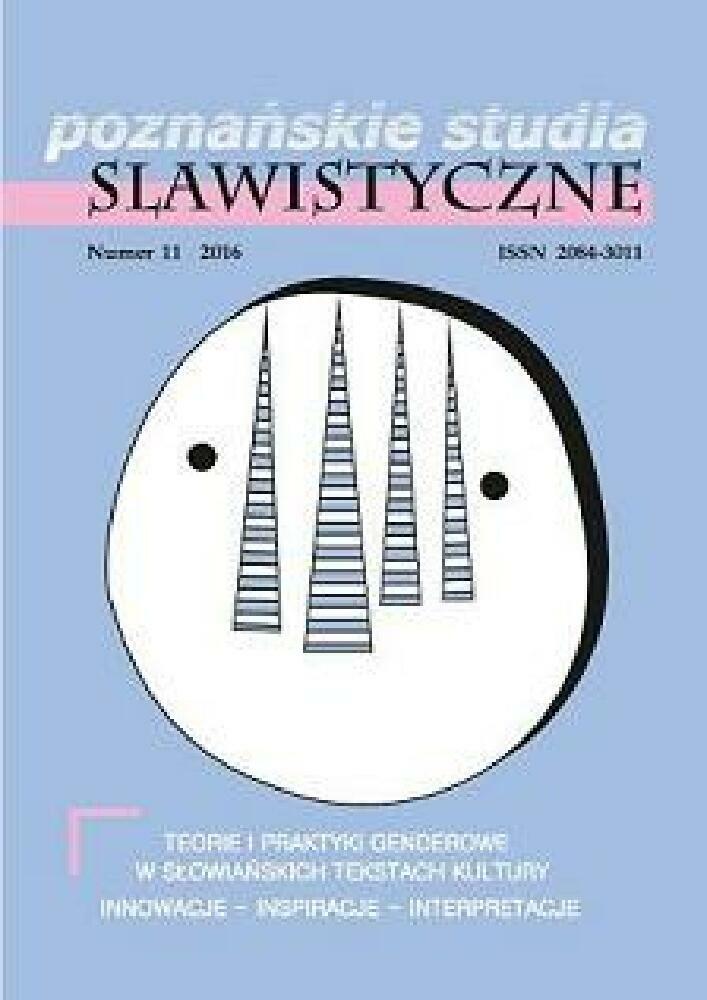Abstract
During the 16th century in Dubrovnik (Ragusa), the female voice was rarely heard in public, and women (especially those of higher ranks) were mainly confined to a life within the household. However, a special voice belonged to Marija Gundulić (Maria Gondola), who wrote in Italian about the “defence of the female sex” and discussed female spirit and mind, female nature, and intellect in a dedicatory text to the book Discorsi di M. Nicolò Vito di Gozze, gentil’huomo ragugeo, Dell’Academia de gli occulti, sopra le Metheore d’Aristotele, Ridotti in dialogo & divisi in quattro giornate, by Nikola Gučetić (Nicolò Vito di Gozze) (Venice, 1584/1585). In this paper, I focus on two versions of the text of the dedication. Written in defence of the honour of the woman poet Cvijeta Zuzorić (Fiore/a Zuzzori) and women in general, Gondola criticizes the false morality and hypocrisy of Dubrovnik society, and as such, the first version of this book was censored. The book was published again one year later in 1585, with a revised dedication – one and a half pages shorter. The importance of this work is twofold. In the first place, it is the only written (or at least preserved) work by Gondola. Moreover, it represents the first female voice in defence of women’s rights at the east shore of the Adriatic. Comparing the two versions of the book’s dedication, this paper will attempt to answer questions regarding the importance of women’s authorship, and the important influence of power and censorship in the 16th century Dubrovnik.References
XIX, Privata, XIX, Amministrazione Niccolo e Maruscia di Gozze (vol.10) in Historical Archive in Dubrovnik, HAD.
Appendini F.M., 1803, Notizie Istorico-Critiche Sulle Antichità, Storia e Letteratura De’ Ragusei, Ragusa.
Bogišić R., 1988, Marin Držić i Mario Kaboga, “Forum” no. 27/3–4, pp. 189–206.
Cox V., 2008, Women’s writing in Italy: 1400-1650, Baltimore.
Cox V., 2013a, Lyric poetry by women of the Italian Renaissance. Baltimore.
Cox V., 2013b, The Female Voice in Italian Renaissance Dialogue, “MLN” no. 1, vol. 128, pp. 53–78.
https://doi.org/10.1353/mln.2013.0006
Cox V., 2013c, Italian Dialogues Incorporating Female Speakers, “MLN” no. 1, vol. 128, pp. 79–83.
https://doi.org/10.1353/mln.2013.0008
Dolci S., 1767, Fasti Litterario-Ragusini: sive, virorum litteratorum, qui usque ad annum 1766, in: idem, Ragusina claruerunt ditione, prospectus, Venetiis (s.n.).
Dolci S., 1767, Fasti litterario-ragusini, Zagreb.
Eckerle J.A., 2013, Romancing the Self in Early Modern Englishwomen’s Life Writing, Farnham.
Fališevac D., 2007, Dubrovnik – otvoreni i zatvoreni grad: studije o dubrovačkoj književnoj kulturi, Zagreb.
Fonte, M., 2006, Floridoro: a chivalric romance, Chicago.
https://doi.org/10.7208/chicago/9780226256795.001.0001
Gabrielli F.M., 2015, Sestra sestri: bilješke o kanconijeru Nade Bunić (Speranze di Bona), in: Građa za povijest književnosti hrvatske, 38, ed. D. Falisevac, Zagreb, pp. 83–182.
Genette G., 1997, Paratexts. Thresholds of Interpretation, trans. J.E. Lewin, Cambridge.
Gliubich S., 1856, Dizionario biografico degli uomini illustri della Dalmazia, compilato dall’ ab. Simeone Gliubich,... (s. l.): R. Lechner (Vienna); <http://hdl.handle. net/2027/uc1.a0001526367>, 15.01.2015.
Gozze N.V. di, 1581, Dialogo della bellezza detto Antos, secondo la mente di Platone. Composto da m. Nicolò Vito di Gozze, gentilhuomo ragugeo. Nuouamente posto in luce. In Venetia: appresso Francesco Ziletti.
Gozze N.V. di, 1585, Discorsi ... Sopra Le Metheore d’Aristotile, Venice.
Gučetić N., 2008, Dialogo Della Bellezza = Dijalog o Ljepoti : Dialogo d’Amore = Dijalog o Ljubavi, ed. Lj. Schiffler, trans. N. Badurina, Zagreb.
Herculliana C., 1584, Lettere di philosophia naturale, di Camilla Herculiana, speciala alle tre stelle in Padoua, indrizzate alla serenissima Regina di Polonia: nella quale si tratta la natural causa delli diluuij, et il natural temperamento dell’huomo, et la natural formation dell’arco celeste. In Cracouia: nella stamperia di Lazaro.
Janeković-Römer Z., 1994, Rod i grad: Dubrovačka obitelj od XIII do XV stoljeća, Dubrovnik.
Janeković-Römer Z., 2004, Maria Gondola Gozze: La querelle des femmes u renesansnom Dubrovniku, in: Žene u Hrvatskoj, Ženska i kulturna povijest, ed. A. Feldman, Zagreb, pp.105–123.
Janeković-Römer Z., 2009, The Family Records of Andreas de Pozza from 1569–1603, “Dubrovnik Annals” no. 13, pp. 37–54, <http://hrcak.srce.hr/index.php?show=clanak&id_clanak_jezik=74540>, 12.01.2015.
Kelso R., 1956, Doctrine for the Lady of the Renaissance, Urbana–Champaign.
Kolendić P., 1935, Biografska dela Ignjata Djurdjevica, Belgrade.
Lyons J.D., 1989, Exemplum: The Rhetoric of Example in Early Modern France and Italy, Princeton.
Marinella L., 1999, The nobility and excellence of women, and the defects and vices of men, Chicago.
https://doi.org/10.7208/chicago/9780226505503.001.0001
Marinella L., 1600, Le Nobiltà et eccellenze delle donne, et i diffetti e mancamenti de gli huomini, discorso di Lucretia Marinella, in due parti diviso (s. l): appresso G.B. Ciotti (Venetia).
Marković Z., 1970, Pjesnikinje Starog Dubrovnika. Od sredine XVI do svršetka XVIII stoljeća u Kulturnoj Sredini Svoga Vremena, Zagreb.
Monaldi M., 1599, Irene, overo Della Bellezza; con altri due dialoghi; uno dell’havere, & l’altro della metafisica, Venetia: (s.n.).
Nifo A., 1531, Augustini Niphi Medicis De pulchro liber (s. l), Roma.
Novak P.S., 2008, Vježbanja renesanse; Predavanja iz književnosti na Sveučilištu Yale, Zagreb.
Novak P.S., 2009, Je li u slavenskoj renesansi bilo žena?, in: idem, Slaveni i renesansi, Zagreb, pp. 678–683, <http://www.matica.hr/media/pdf_knjige/722/Renesansa%20678-683.pdf>, 19.01.2015.
Pantić M., 1983, Bobali ed i Gozzi da Ragusa e L’Italia nel secento, ed. L.S. Olschki, Firenze.
Ray M.K., 2015, Daughters of alchemy: women and scientific culture in early modern Italy. Cambridge.
https://doi.org/10.4159/9780674425873
Rešetar M., 1930, Djela Marina Držića, Stari pisci hrvatski, Zagreb.
Šifler-Premec Lj., 1977, Nikola Gučetić, Zagreb.
Šimunković Lj., Rožman M., 1998, Žensko pismo u renesansi, dubrovački primjer: Mara Gundulić i Cvijeta Zuzorić, “Mogućnosti: književnost, umjetnost, kulturni problem”, no. 4–6, pp. 235–241.
Tadić J., 1948, Dubrovački portreti, vol. 1, Srpska književna zadruga, Beograd.
Terzoli M.A., 2010, I margini dell’opera nei libri di poesia: Strategie e convenzioni dedicatorie nel Petrarchismo italiano, <http://www.margini.unibas.ch/web/en/ content/saggi.html>, 12.12.2014.
Torbarina, J., 1931, Italian Influence on the poets of the Ragusan Republic, London.
Vekarić N., 2011, Vlastela grada Dubrovnika. 1: Korijeni, struktura i razvoj dubrovačkog plemstva, Zagreb–Dubrovnik.
Vidan G., 1998, Cvijeta Zuzorić et les Ragusians. Hommage a Zdenka Marković (1884–1974), “Most-Le Pont” no. 3–4, pp. 178–185.
Zaninović A., 1953, Drugo izdanje djela Nikole Gučetića, Anali historijskog instituta jugoslavenske akademije znanosti i umjetnosti u Dubrovniku, Dubrovnik.
License

This work is licensed under a Creative Commons Attribution-NoDerivatives 4.0 International License.
